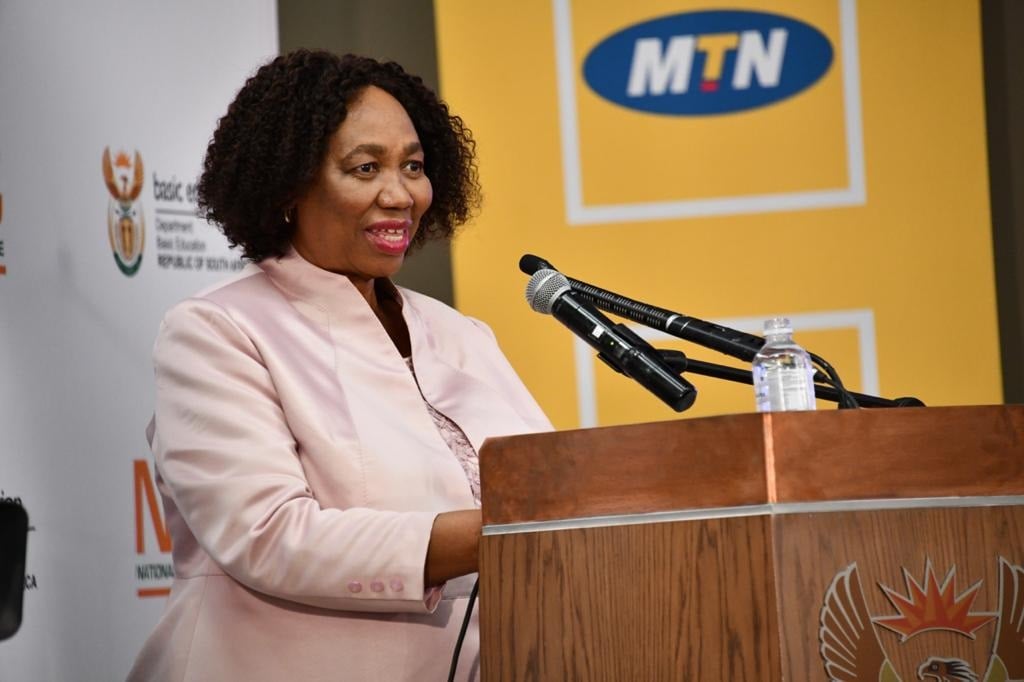
Even the department’s calculations show that, if one takes into account young people who get a matric qualification later on - for instance, after they have left school - the number of young people who end up getting a matric qualification, is likely still around 50%, writes Equal Education researchers Stacey Jacobs and Elizabeth Biney.
"My expectation with my matric results is to pass with good marks… It [the matric year] was affected so badly [by Covid-19] that at times we couldn't cope. We had to cover the whole year's syllabus in months not only just finishing it, but with a mandate of understanding all information given to us… What kept me going is the support our teachers gave us, the support my peers gave me… Also, [the] harsh reality hit us that we do not have a choice, we were never given a choice but to push through tough times," matriculant Yolanda Magugu says, reflecting on the extraordinarily challenging 2020 school year.
For many Grade 12 members of Equal Education (EE) like Yolanda, existing fears and anxieties about their final year of schooling were worsened by the outbreak of the Covid-19 pandemic, which demanded unprecedented learning adjustments from pupils and teachers.
When schools closed in March last year due to Covid-19, the Department of Basic Education and provincial education departments rushed to explore and implement methods of teaching and learning aimed at reaching even the most vulnerable pupils.
As such, lessons were televised and broadcast on community and national radio stations. Another tool in the departments' arsenal was to provide pupils with workbooks and textbooks in an attempt to continue learning while at home. Many teachers and principals worked hard to stay in contact with, and support pupils virtually under difficult circumstances.
No resources
While these approaches tried to facilitate access to learning under extraordinary circumstances, pre-existing inequalities meant not all pupils had access to necessary resources, such as the internet, or devices like computers and smartphones, to meaningfully engage with their schoolwork and adjust to learning from home.
Matric pupils lost valuable teaching time but were expected to cover the full curriculum, with the national department citing that exam papers had already been set. The leaking of the maths and physical science paper two exam questions was yet another hurdle that this cohort had to overcome.
The decision taken by Umalusi to approve the 2020 matric results because the integrity of the National Senior Certificate's (NSC) was not compromised was indeed a relief for the sector, especially the pupils.
READ | Explainer: Experts on the real matric pass rate and why it may decline next year
On 22 February, the country waited in anticipation as department's director-general, Manthanzima Mweli, delivered the technical report on the matric results, ahead of Basic Education Minister Angie Motshekga's official announcement of the national and provincial pass rates.
In his briefing, Mweli suggested pupils had performed well and when Motshekga stood on stage to announce the national pass rate of 76%, many were relieved. We had expected the pass rate to decline drastically.
As a movement of pupils, parents, and community members, EE continues to celebrate all pupils who made it to this point and we applaud the immense effort and time invested by teachers, parents/guardians, and education officials to support pupils during this unprecedented moment.
Improvement in Bachelor's passes
Over the last five years, we have seen progress in the performance of Grade 12 pupils. There has been a steady improvement in the number of Bachelor's passes from pupils in quintile 1 to 3 schools, which are no-fee paying schools that accommodate vulnerable pupils who are deeply impacted by the social and economic conditions of their communities.
It must be noted, however, that pupils in quintile 5 schools consistently achieve more Bachelor's passes - a probable result of greater access to learning resources, such as textbooks, and school infrastructure that promotes dignified and safe learning environments.
That being said, it is important to note the traditional pass rate is only one indicator of the health of the overall basic education system and should not be taken at face value. Specifically, the overall pass rate does not account for those pupils who leave the system - or are held back - before reaching their matric year.
This is why EE calculates the throughput rate. We define it as the percentage of pupils who were in Grade 2 together, and who 10 years later, went on to complete matric together. Though not a perfect measurement, the throughput provides a clearer picture of our educational outcomes.
Even the department’s calculations show that, if one takes into account young people who get a matric qualification later on - for instance, after they have left school - the number of young people who end up getting a matric qualification, is likely still around 50%.
While it was announced the traditional pass rate for the 2020 matric cohort had decreased by five percentage points, EE's analysis shows there was a marginal improvement in the throughput rate in all provinces, except the Western Cape.
While the provincial throughput figures are encouraging, the national proportion of pupils who end up completing their schooling averages well below 50%.
This trend paints a dire picture of pupil retention challenges predating Covid-19. It demands that the national and provincial departments take urgent actions to address inequalities in the system that force pupils out of it, thereby hampering their right to education and prospects.
Struggle for education
Our advocacy has brought about hard-won victories and meaningful change for pupils across South Africa, but the struggle for education justice continues.
Our grassroots organising in five provinces across the country and direct member-informed research, consistently shows that the inequalities in the education system play out more at schools in rural communities and townships as well as those in poor and working-class areas.
Many of these schools lack decent, safe infrastructure and adequate sanitation despite the adoption of the Minimum Uniform Norms and Standards for Public School Infrastructure (norms and standards) in 2013.
This law sets out the basic level of infrastructure that every school must meet to function properly, with specific timeframes within which they must be met. But here we are - almost 10 years later - and the government has failed to meet both the 2016 and 2020 norms and standards deadlines.
Safe infrastructure
That Covid-19 precautions required adequate and safe school infrastructure, such as access to water and a sufficient number of classrooms, among others, are testament to the importance of enabling infrastructure that supports teaching and learning.
That these were not in place, impacted millions of pupils across the country and will continue to until the norms and standards are realised.
Finance Minister Tito Mboweni tabled the 2021/22 national budget on 24 February and announced the total education funding for the next three years will decrease, when inflation is taken into account.
READ | Matric 2020: Experts offer 4 suggestions to fix SA's education system
Regrettably, the whole R2.1 billion cut of the infrastructure budget last year was not reversed. There needs to be a strong political will to prioritise the completion of crucial school infrastructure projects and adequate funding towards the basic education sector.
The alternative would otherwise be another year of pupils being caught in the same cycle.
In a year fraught with difficulties, the departments must build on lessons learnt from 2020 and carry them into the current school year.
- Stacey Jacobs and Elizabeth Biney are Equal Education researchers.
*Want to respond to the columnist? Send your letter or article to opinions@news24.com with your name, profile picture, contact details and location. We encourage a diversity of voices and views in our readers' submissions and reserve the right not to publish any and all submissions received.
Disclaimer: News24 encourages freedom of speech and the expression of diverse views. The views of columnists published on News24 are therefore their own and do not necessarily represent the views of News24.




 Publications
Publications
 Partners
Partners


























